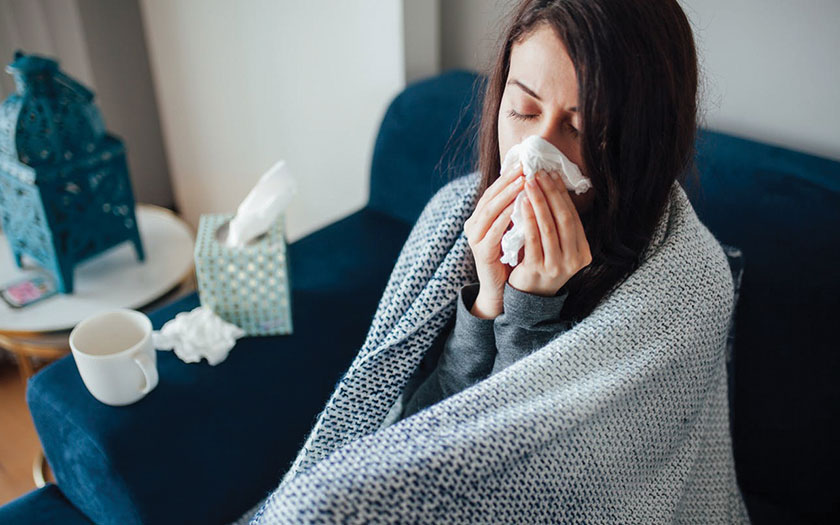Influenza, also known as ‘the flu’ is one of the most common infectious diseases that is highly contagious due to airborne transmission.
Classically, this infection occurs as seasonal epidemics whereby incidences are usually higher in certain regions. Generally, in the Northern hemisphere it occurs in early fall, peaks in mid-February and ends in late spring in the following year. However, in tropical areas such as Malaysia, it occurs throughout the year.
Virus Travels Wide
Whenever an infected person coughs or sneezes, the virus spreads through airborne droplets that can travel up to six feet. Apart from being airborne, it can also spread by direct contact (touch), as the virus can survive up to 48 hours on surfaces.
There are actually four types of influenza that exist but the types that are most commonly causing epidemics are Type A and B. On top of that, Influenza A has further sub-types or strains whilst influenza B has none.
Telltale Signs
An influenza infection manifests itself via an acute febrile illness with variable degrees of associated systemic symptoms. Mainly, it involves the nose and throat, possibly spreading to the lungs, causing acute respiratory illness. The mildest form of outcome would be mild fatigue while extreme cases result in respiratory failure and death. The presenting signs and symptoms of Influenza infection overlaps with other upper respiratory infections. Even a dengue patient can display similar symptoms especially in the early stages of the disease.
Common systemic symptoms observed in influenza infection includes:-
- Fever – often high grade
- Sore throat
- Headache – frontal or retro orbital
- Body weakness and fatigue
- Severe aches and pains in joints and muscles (especially the back and around the eyes)
- Nasal discharge
- Cough – often dry
- Red and/or watery eyes
- Vomiting and diarrhea – especially in children
Most patients will recover between three to four days, but malaise and lethargy can sometime last up to two weeks.

Influenza And The Common Cold
Apart from the clinical symptoms, flu is also known to cause significant morbidity and mortality. For instance, contributing to human suffering and loss of workdays. Certain groups of people have a higher risk of complications from the flu such as the elderly (above 65), young children (below five), pregnant women and people with chronic medical conditions as well as weakened immune systems.
Some of us might confuse between the term common cold and flu. The common cold is usually a mild infection caused by respiratory viruses other than influenza. Symptoms are usually milder with low grade fever associated with runny or stuffy nose without body ache or weakness. In addition to that, cold doesn’t require specific treatments with anti-viral medication. It is also not known to cause any severe complications.
Normally, an infected person will exhibit influenza symptoms two days after exposure but theoretically this can range from one to four days. It is possible that the exposure can come from an infected person who is well and asymptomatic since the airborne transmission usually starts a day before the patient develops any symptoms.
Confirming Diagnosis
To diagnose any disease, doctors normally will do a thorough check of the patient’s medical history and carry out a full physical examination. This is to ascertain the possible diseases that the person may have. Similarly, in influenza infection, the same steps are done. If it strongly suggests an influenza infection, the next step is to do a confirmatory test. The test will be performed by taking samples from the nose or throat and checking for the presence of either Influenza A or B. Additionally, a patient who is suspected of having infection in the lungs, a chest radiograph (CXR) will be performed.
The most potent weapon to combat the influenza infection is by preventing the disease itself, and the mainstay of prevention remains to be influenza vaccination. Vaccine will become effective after 10 to 14 days of its administration. Thus, exposure within those periods might still risk infection. It is suggested to vaccinate yearly as the vaccine components change in order to keep up with the evolving strains of the virus.
Women And Children
In children, influenza vaccination is recommended from the age of six months and above, especially children with medical conditions that increase risks of severe complications. This includes preterm babies, and those with chronic diseases of the lung or heart. If a household has a child below six months, other family members should vaccinate to reduce the risk of influenza infection.
Vaccination is also safe for pregnant women regardless of trimester. In fact, it is recommended as their newborns too will be protected against influenza in the first few months of life.

Help Is Here
Generally, viral illnesses are self-limiting which means it will resolve on its own. However, antiviral usage is sometimes indicated in patients who have been diagnosed with influenza either clinically or via lab testing. It will reduce the duration and severity of the influenza infection. For maximum effectiveness, the anti-viral treatment should start during the first 48 hours of symptoms and administered twice daily for five days. Antibiotics are not required for a viral infection such as Influenza unless the treating doctor is suspecting a secondary infection by bacteria.
Other than anti-viral treatments, below are measures to expedite recovery:-
- Bed rest
- Drink enough fluids to avoid dehydration.
- Avoid physical exertion.
- Take fever-reducing medicine such as Paracetamol
- Practice cough etiquette when you sneeze or cough by covering your mouth with a tissue. Throw the tissue immediately to prevent transmission.
During the flu season, vaccines and anti-viral medications can be limited. When there is a surge in the number of flu cases in our vicinity, it is imperative that we take the following measures to reduce risks of infection:-

- Wash hands often and/or using alcohol-based hand sanitizer.
- Avoid meeting people who have the flu.
- Avoid crowds.
- Wear a facial mask in public areas.
- Avoid sharing others’ personal equipment such as towels and utensils.
- Ensure air circulation is good at home and work.
- Clean exposed surfaces such as tabletops, regularly.
 Dr Muhammad bin Shahruddin,
Dr Muhammad bin Shahruddin,
Consultant Internal Medicine Physician, Columbia Asia Hospital – Puchong


